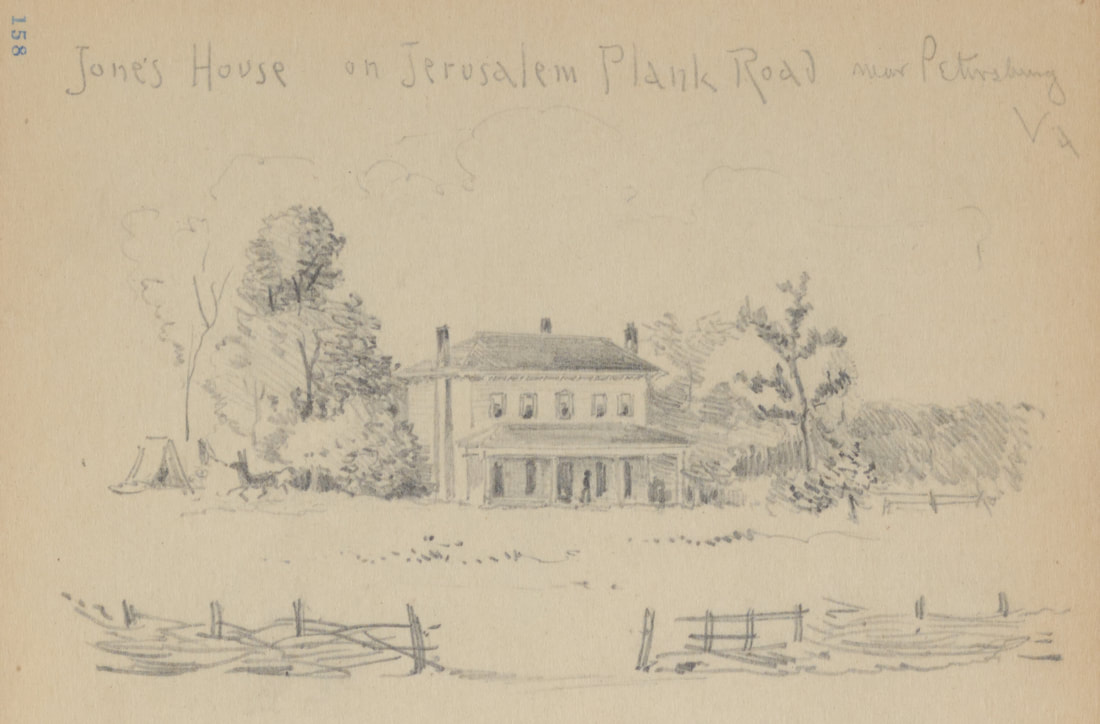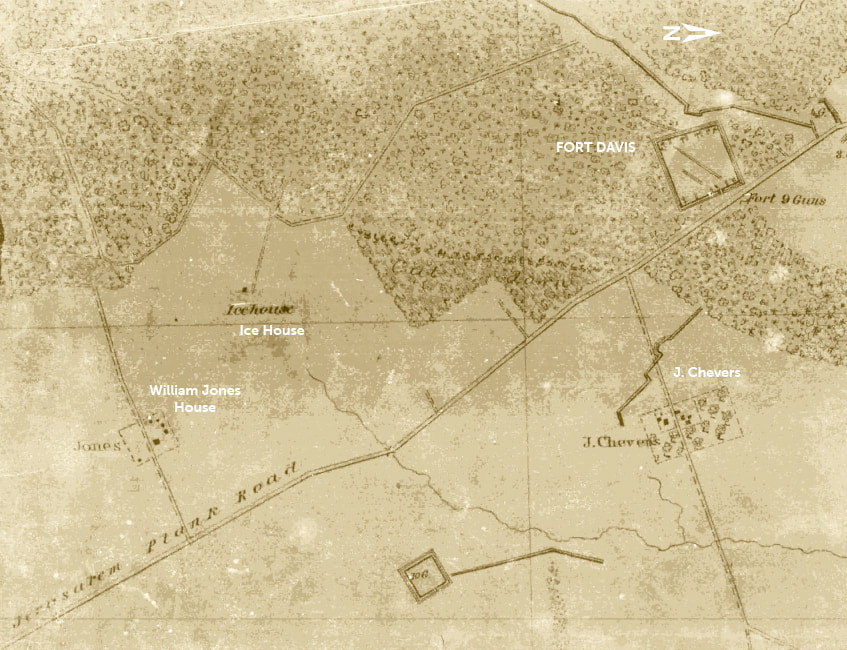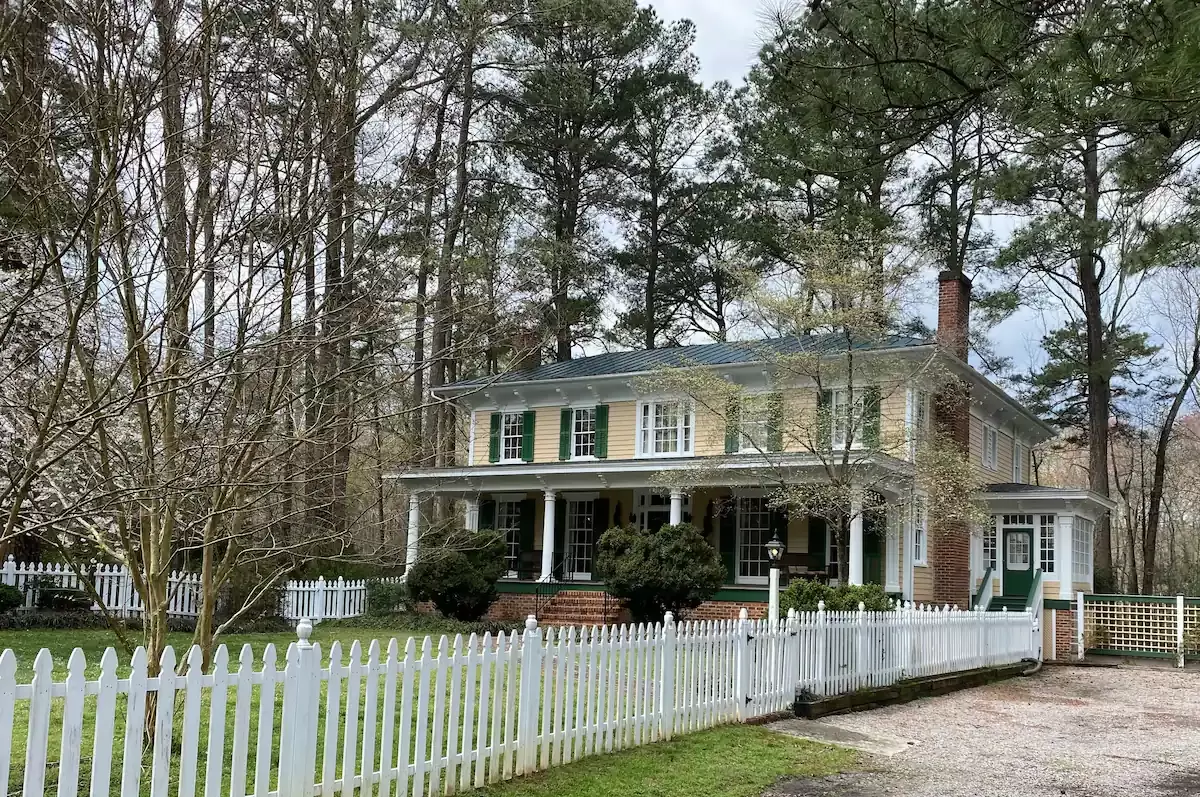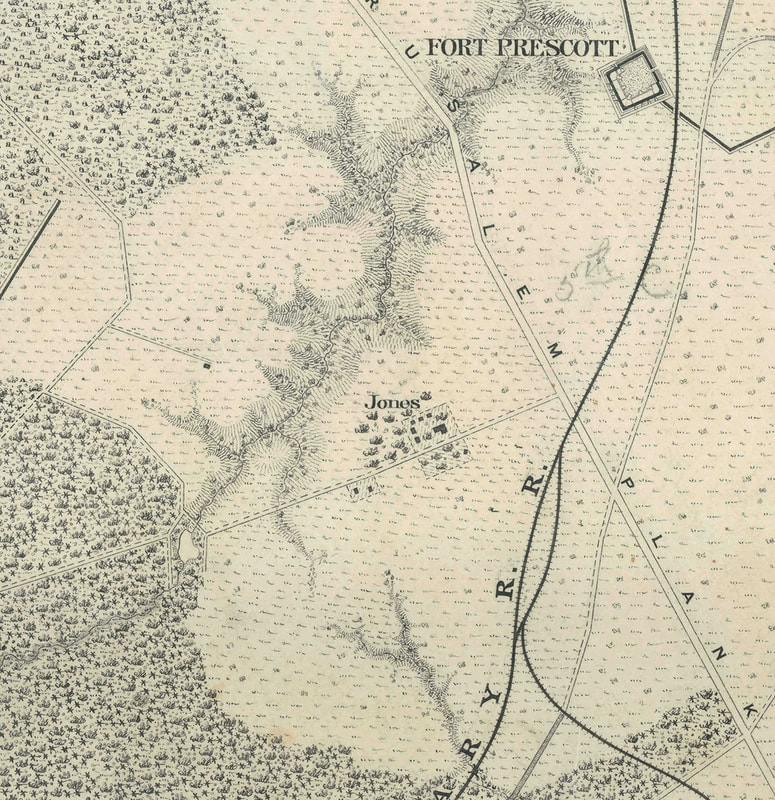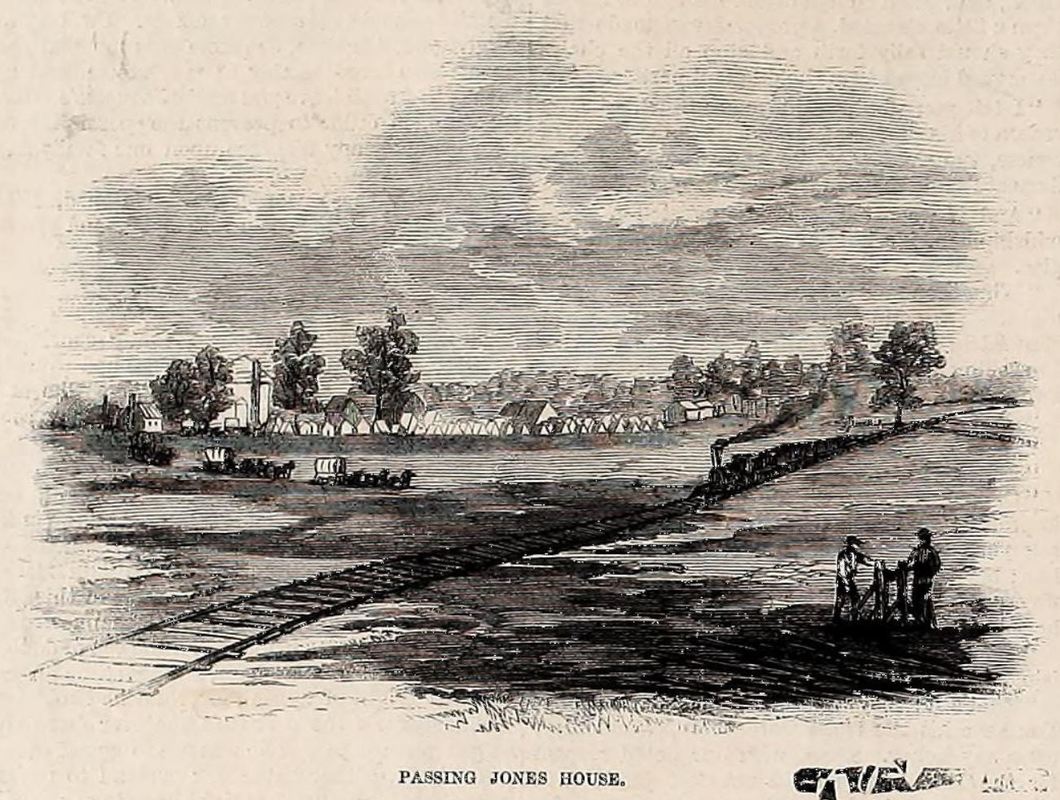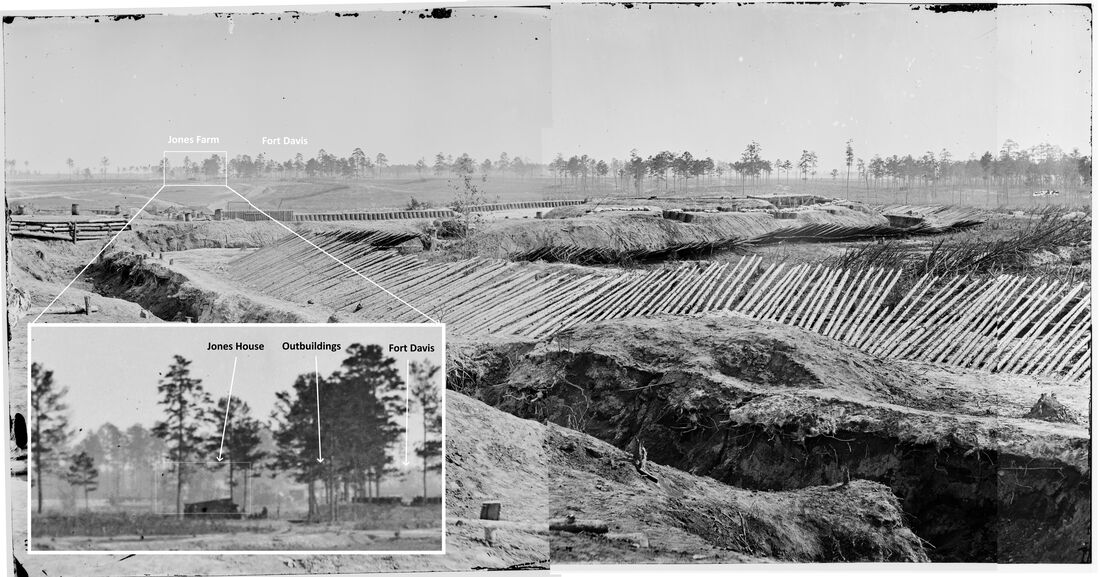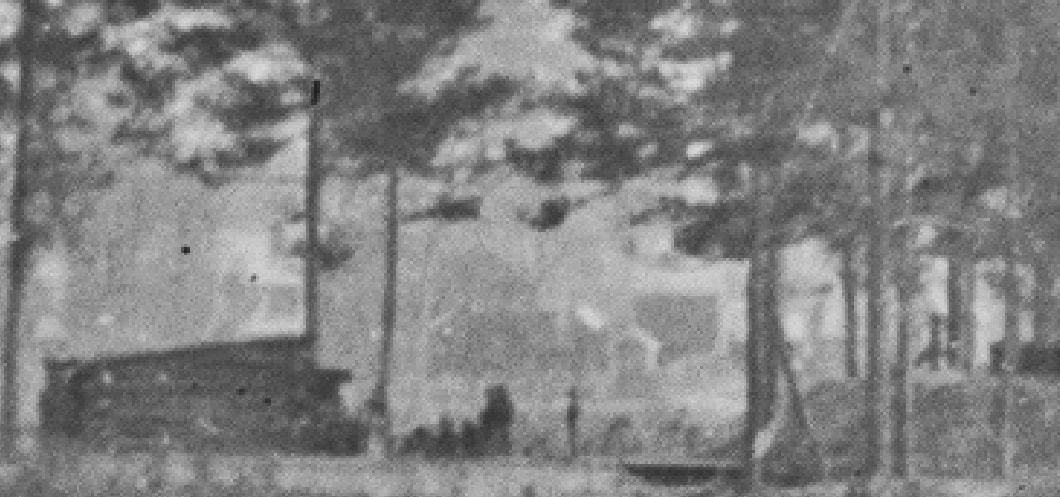William J. Jones House on Jerusalem Plank Road
The William J. Jones house was a prominent landmark for the contending armies on the Jerusalem Plank Road (modern S. Crater Road) about four miles south of the Petersburg court house and 0.6 mile south of Fort Davis. The Jones house served as Gen. Meade's headquarters, during the operations on the plank road June 21-23, 1864. Passing troops were gratified by its voluminous ice house. During July, the house and grounds hosted the headquarters of Second Army Corps, Birney's and then Barlow's Divisions. When the action moved west along a cross road toward Weldon Railroad, the Jones house was often used as a reference point in movements and dispatches. The U.S. Military Railroad crossed the plank road a few hundred yards south of the house, a point known as Hancock's Station. Notoriously, the Court of Inquiry that examined Burnside's conduct at the Battle of the Crater, July 30, met here for seventeen sessions from August 6 until September 9..The farm continued as a staging area for numerous artillery batteries through September. There are several useful drawings of the house, and it appears in the background of a photograph of a soldier's grave (shown below). First begun in 1815 with various additions, the house survives today, although in a slightly shifted location. As of this writing, the property is for sale. Theodore Lyman recorded a number of interesting anecdotes in Meade's Army involving Gen. Meade and the Jones house, which are included below.
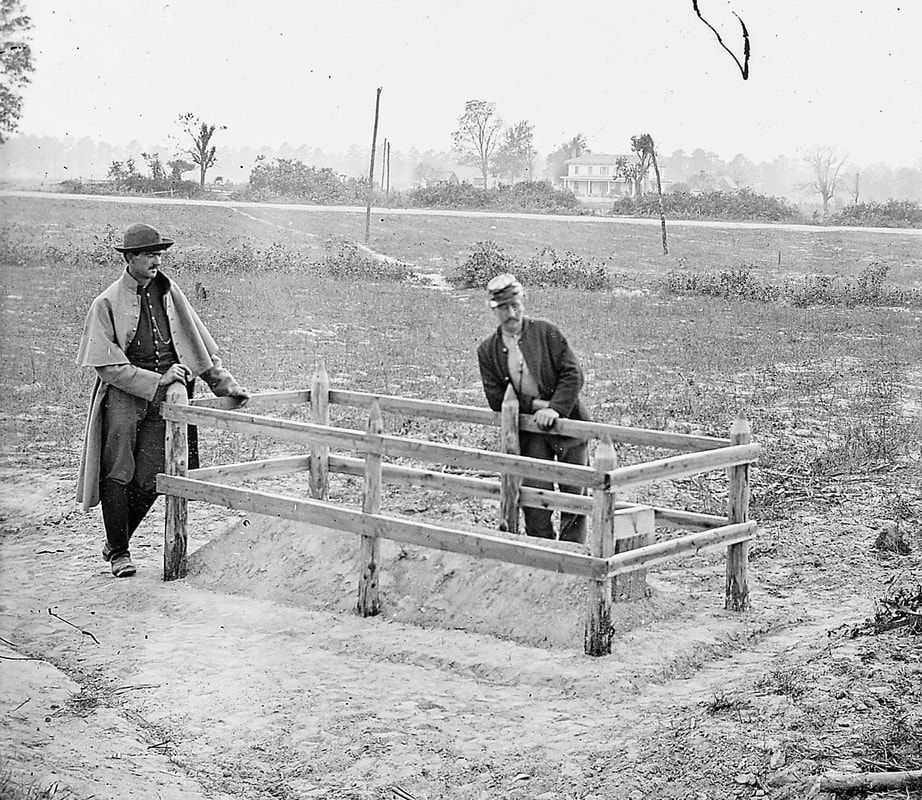
"Soldier's Grave" from the National Archives, Brady Collection, negative identifier 111-B-3484. Two soldiers appear to mourn a fallen comrade. Sadly, the name on the wooden head board cannot be seen. Julie Steele of the Petersburg Project identified the house in the background as the Jones house. The Jerusalem Plank Road extends across the photo left to right. Note line of telegraph poles.
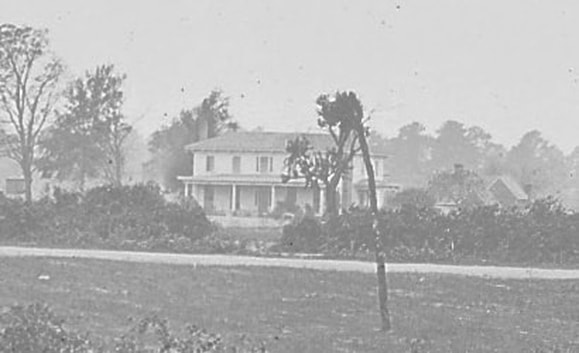
A magnified view of the house in the above photograph. Architectural details appear to confirm its identity as the William Jones house on Jerusalem Plank Road -- end chimneys, moderately sloped roof, full-length porch, five windows across second floor (middle window framed by smaller panes). This was the scene of much military activity in June and July 1864. The house served as Second Army Corps headquarters for a time after June 21st and the battle for Jerusalem Plank Road. Located at the intersection of the plank road and the military railroad, it was a convenient staging area for Federal troops and artillery.
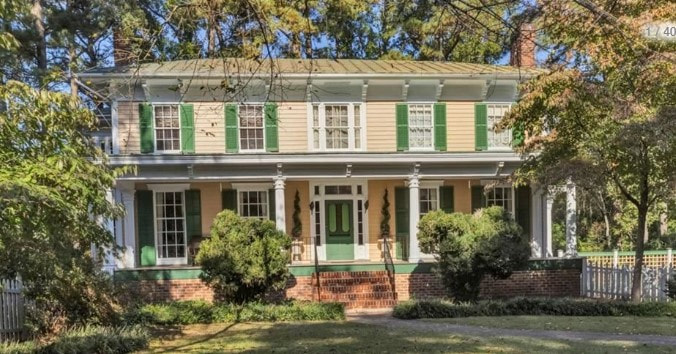
The William Jones House, a private residence, still stands off Crater Road (Jerusalem Plank Road). This photograph from November 2020 is from a real estate notice. The house, built in phases beginning in 1815, was on the market at the time for $485,000. The Jones House was moved several hundred yards from its original location in 1976 to escape commercial clutter along Crater Road.
|
June 23
Gen. Wright arrived at Birney’s camp to try and rectify the line and get a simultaneous advance. I went into the Jones house, hard by, to tell General Meade. He sat there, chafing, with an eye like a rattlesnake and a nose that seemed twice as sharp and long as usual! The three Generals conferred a long while. Thus continuously spurred Wright began to prepare a column of attack (of all things in the world!) but dusk had come already, and he was not sorry of the excuse. The skirmishers, however, fired a good deal, long after dark. —Mounted, and, picking my way over a line of battle that was lying down to avoid the shots, rode in to the Jones house. Gen. Meade there in a tearing passion at Wright and at everybody (and small blame to him!). He undertook to pitch into me, but, as I had a headache, I didn’t care, and replied up & down to everything proving that what the rebels last moved along was our “rear” and not our “flank.” Theodore Lyman in Meade's Army, June 21-23, 1864, during the fight on Jerusalem Plank Road. |
June 21, 1864
Rode up the Jerusalem plank, past the house of “Maasa Billy Jones” and towards where I had carried out the flag. Struck our new breastworks (about where Ft. Davis was after). There was there a battery of light twelves. Dense woods on each side and in front; but could see, perhaps 800 yards in front, the house occupied by the rebel sharpshooters. As Duane and I were riding home, about dusk, we met Ricketts’ division coming along near the Jones house. “I don’t know the country,” quoth R[icketts] “I wish you would put me in position.” But Duane couldn’t see it. He has no extra enthusiasm, the Major, and doesn’t propose to do extra duty. June 22, 1864
10 A.M. We arrive at Birney’s Headq’rs in rear of Jones’ house, Gen. Williams going with the staff to new camp on the Jerusalem plank, opposite and below Jones. I was ordered, at once, to ascertain and report the position of the 6th Corps (9.45 A.M.) Passed through a wood, and, S.W. of Jones house, found Upton’s brigade and his division (1st) in a line, running north and south, and joining Barlow on the right. He asked me to ask Gen. Williams if his Commission as Brigadier had got along yet. At Gen. Patrick’s found the once splendid Col. Baker, dusty & exhausted under a tree. Barlow had relieved him of his horse, and he pathetically appealed to me for an ambulance, saying he had been march[ed] 12 miles in the dust & had an affection of the heart! Had seen him last night at Gibbon’s Headqr’s, by Jones ice-house. General Meade very indignant, ordered an advance along the whole front at 7. Wright said his men were tired & could not foresee a good result and asked me to ride in and inform General Meade, which did. Found him at the Jones house. He heard my message and said: “Ask Gen. Wright, what I am to do tomorrow if I do not advance tonight?” I rode back with this question. “Ah” said Wright “that I do not know!” |
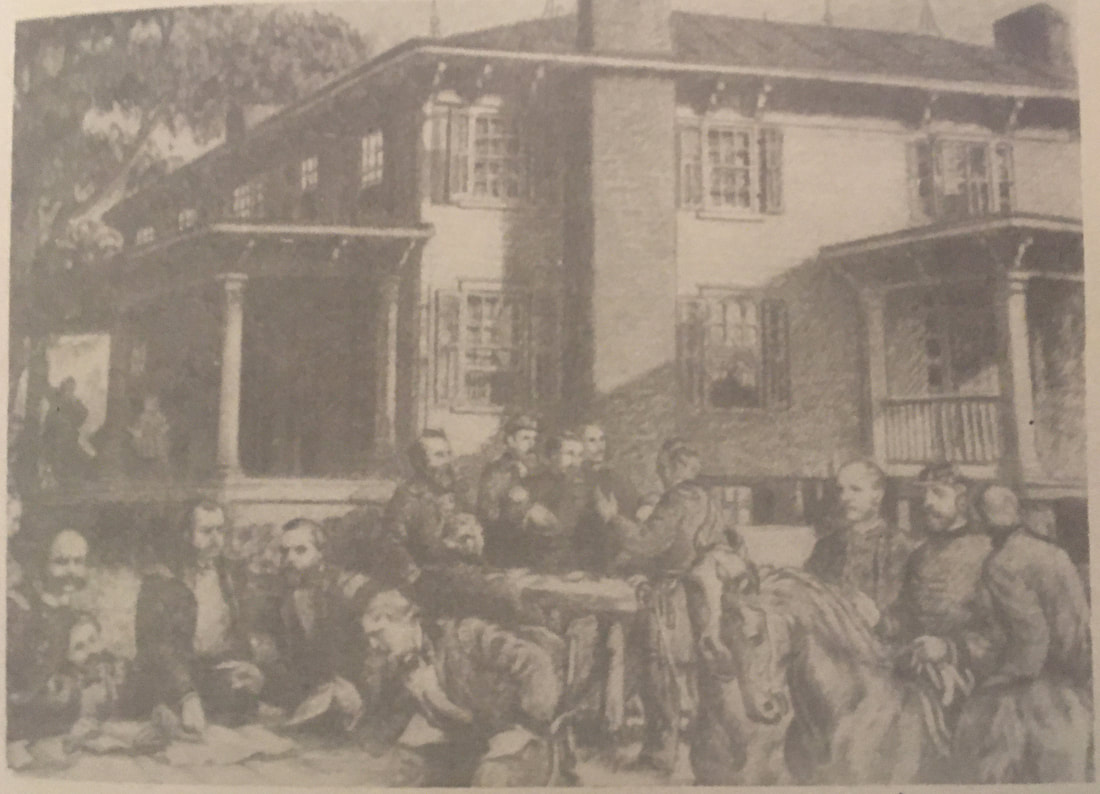
Drawing of the "Hancock Court of Inquiry at the Jones House" from the collection of Petersburg National Battlefield. The Court convened August 6, 1864, at Second Army Corps headquarters at the Jones House, to examine culpability for the July 30 Crater debacle and met for seventeen sessions adjourning September 9th. Ambrose Burnside, who did not fare well in the proceedings, can be seen at bottom left of the drawing.

